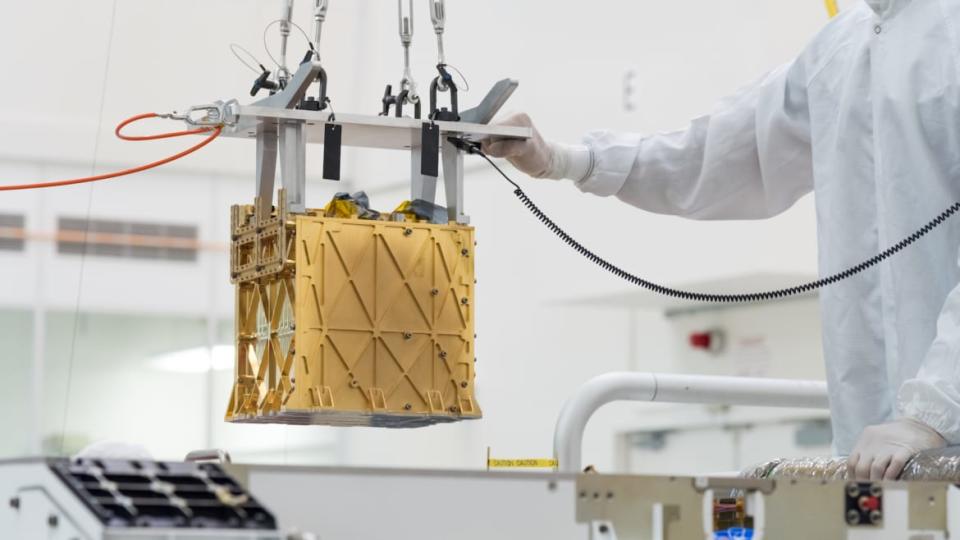This Is the Most Important Experiment to Happen on Mars Yet

If we ever want to establish a colony on Mars (paging Elon Musk), then we need to make sure we have plenty of oxygen to keep our astronauts alive. The only problem: there’s not exactly a lot of it on the Red Planet, since its atmosphere is mostly carbon dioxide.
Luckily, a team of MIT scientists have created a device that’s roughly the size of a lunch box and is capable of producing oxygen on Mars—and apparently, it’s been doing so for more than a year now.
In a study published Wednesday in the journal Science Advances, the MIT team launched the Mars Oxygen In-Situ Resource Utilization Experiment (MOXIE) aboard NASA’s Perseverance rover in 2020. Beginning in April 2021, it conducted six runs where it turned the carbon-rich martian atmosphere into breathable oxygen. During each run, it created six grams of oxygen an hour—roughly as much as a small tree.
The study’s authors believe that the success of the experiment can lay the groundwork for future oxygen factories on Mars. “We have learned a tremendous amount that will inform future systems at a larger scale,” Michael Hecht, principal investigator of the MOXIE mission and co-author of the study, said in a statement.
MOXIE works by drawing carbon dioxide out of Mars’ atmosphere, which is then sucked through a filter that cleans it. The air is then processed through an instrument that separates the carbon dioxide into oxygen ions and carbon monoxide. The ions are then recombined to create breathable oxygen, while the rest is safely farted back into Mars’ atmosphere.
And voila! You have an absolute game-changing device for future astronauts. If and when this is scaled up, the authors say that it can produce oxygen at the rate of several hundred trees an hour. Along with creating breathable air, it can also help produce fuel for rockets to help send samples and astronauts back to Earth. When combined with hydrogen and a power source, it could also create water.
NASA Will Send a Fleet of Helicopter Drones to Fly Over Mars
“This is the first demonstration of actually using resources on the surface of another planetary body, and transforming them chemically into something that would be useful for a human mission,” Jeffrey Hoffman, MOXIE deputy principal investigator and co-author of the study, said in a statement. “It’s historic in that sense.”
The team plans to continue running the device in order to test “daytime and nighttime oxygen production during all martian seasons,” according to the study. This will ensure that a larger version of MOXIE will be able to operate no matter what the environment is like on Mars. After all, humans are planning on colonizing the planet for the long haul. We’ll need a system that’ll be able to keep us alive there year round.
The impact of MOXIE’s success can’t be overstated enough. Resources are one of the biggest hurdles to overcome in order to successfully colonize other planets. Having a machine that draws on resources that are already there to create the ones we need is a welcome breath of fresh air.
Got a tip? Send it to The Daily Beast here
Get the Daily Beast's biggest scoops and scandals delivered right to your inbox. Sign up now.
Stay informed and gain unlimited access to the Daily Beast's unmatched reporting. Subscribe now.

 money
money 